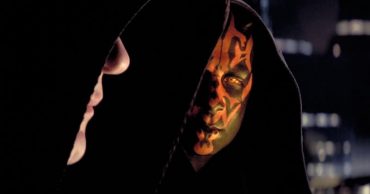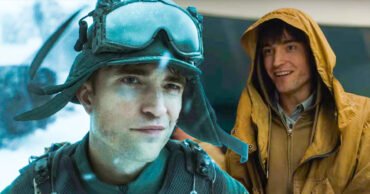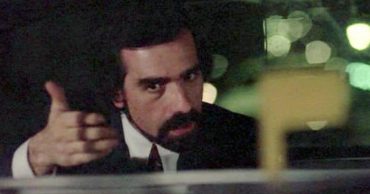
With the exception of anime (which I am leaving off the list, or we would be here all day), the biggest misconception people make when it comes to animated films is that they are all made with the intent of having children as their target demographic. In some cases, that could not be further from the truth. Animation is an incredible medium in which to tell a story, and some directors realized that, at the time, they could do more (and get away with more) using animation than they could shooting the same story, live action.
Also, the certain simplistic animation techniques that could be implemented were time saving and money saving (rotoscoping), even if the ends results were, at times, not pretty. And though the animation could be weak at moments, the intricacies of these tales often revealed themselves over time, and not upon initial viewings. As a child, I went at some of these with the “it’s animated, so it must be made for me” mentality, and the end result was me being traumatized by a few of these. In hindsight, though, now I can see just how subversive and brilliant some of these films are. Of course, as is the case with any medium, some of these are shocking just to be shocking, so the beauty here is digging deep, and finding the diamonds among all the coal. And here are seven of my favorite.
Fritz the Cat

Yes, you will see a few Ralph Bakshi films on this list, as I am sure you were somewhat aware. If I were a bit lazier, I could have done ONLY Bakshi movies, and been done with this list in ten minutes, but I decided to focus on only a few of his films, and try to capture a bit of a wider range. But as far as cartoons aimed at adults, he is the innovator, and Fritz was the forerunner.
For the uninitiated, Ralph Bakshi was pretty much the anti-Disney. He made independent, adult-oriented animated films. And though he has many to his name, and a bit of a cult legacy, it all began with his first film. An animated version of the much loved Robert Crumb comic strip, Fritz the Cat, which was released in theaters in 1972. It was also the first animated film to ever receive an X rating.
Yes, Fritz the Cat was an X rated cartoon that was released in theaters, although not many.
The best way you can describe Fritz the Cat if you watched it right now is it is a sex and drug fueled comedy that fears no taboo and takes pleasure in crossing lines that few would fear to tread. It is racially insensitive, politically incorrect, and honestly, a little uncomfortable to watch. Well, at times, a lot uncomfortable to watch.
That being said, this movie was a wake up call to people who really did think that animated films with talking animals were only done by Disney. In Fritz’s world, animated character would literally be “done” by Disney. While Fritz the Cat was just a little too over the top for me, Bakshi would go on to blow my mind eleven years later, with…
Fire and Ice

Inspired by the “too awesome I cannot find the proper words to sum it up” fantasy artwork of the immortal Frank Frazetta, and an actual collaboration between the two artists, Fire and Ice was a somewhat typical sword and sorcery movie. Regardless of that, when you see that movie at nine years old, and up to that point all you knew were Mickey and Donald, it can be a pretty life changing moment . My father is an artist, and was a huge fan of Frazetta, which is why I was lucky enough to see this movie with my older brother and my Dad when I was so young.
Fire and Ice it had everything that made movies awesome to me: Axes, Ice Queen’s, Ogres(or orcs or trolls or subhumans whatever you choose to call this particular version), feminine, long haired heroes (I was a weird kid), sidekicks with a vague moral compass who chooses to fight for good, killing, ice mountains, lava lakes, and animation.
Also, funny trivia fact: Thomas Kinkade (who recently passed, and was famous for all those Bob Ross type nature paintings that end up on candles) painted quite a few of the backgrounds in this film. So Ralph Bakshi, Frank Frazetta and Thomas Kinkade walk into a bar. Sounds like the opening of a nerd joke that has no punchline.
Watership Down

Let’s go see an animated movie about talking rabbits, they said. It will be adorable, they said.
Ever since Thumper in Bambi, I have loved animated, talking bunnies (please do not comment about the differences between rabbits and bunnies. I know….), so it only made sense to us that I would want to see a movie that was FILLED with animated, talking bunnies. Well, imagine my horror when the bunnies started killing each other. Well, it isn’t that simple, but it does get there.
It is a movie about a pilgrimage some rabbits make, and the hardships they encounter. From the politics between the rabbits themselves, to issues as heavy as death, the movie is unexpected, but utterly engrossing.
Now despite the fact that the film messed up my young mind at the time, watching it now, it captivates me. I still feel like it handles death with more grace than most movies do, and that scene when Simon and Garfunkel’s Bright Eyes is playing just a truly breathtaking moment in a film, and it is a moment where you completely lose sight of the fact that this movie is animated. Rarely do animated movies summon emotions like this in a viewer for as long of a time as this film does.
You know that feeling you got when Bambi’s Mom gets shot? Yes, this movie is that feeling, the whole time. But that does not make it a bad film. It is emotional and exhausting at times, but there are also moments of true beauty and brilliance, and it is worth the journey just to see how it plays out.
BUT, it is said, you cannot talk about Watership Down without talking about….
The Plague Dogs

Both Watership Down and Plague Dogs are novels by author Richard Adams, and both deal with animals placed in incredibly tense and harrowing situations, and we get to see how those situations effect them, and effect the lives of those around them. Though Plague Dogs is the darker of the two stories, they deserve spots on this list, side by side. The animation styles between the films is consistent, and though they take place in “the real word’, the consistency between the two makes it feel like they take place in the same world, making the whole story feel more believable.
The Plague Dogs is a story about two dogs, Rowf and Snitter, and their subsequent escape from a testing facility and their attempt to reintegrate themselves into society and survive, all while being hunted by their old captors (there is little doubt that this book inspired WE3, the comic I have gushed about before). Much more is revealed as the story progresses, and when the great question as to whether or not these dogs are carrying a bubonic plague type chemical weapon gets asked of the viewer, suddenly, even you will be unsure if their escape was the best course of action.
And I can also tell you, (slight SPOILER) the book got eventual epilogues that explains what happens to Rowf and Snitter, but the movie sort of leaves things out at sea, so do not expect an uplifting ride with a story book ending, because you will not get that. Instead, you get a constant sense of hopelessness that permeates every frame of this film.
But it is also incredibly moving and warrants a viewing from everyone, if for nothing else than to marvel at the bravery it took to see this film through to completion.
We can’t imagine an animated movie about dogs that were used for experiments and then escaped but they may or may not carry a world ending disease and who may or may not survive was an easy sell, so props for that. And just because an animated movie is for adults, that does not mean the movie has to always be heavy or super serious, as perfectly displayed the enigmatic and awe-inspiring…
The Triplets of Belleville

A French animated comedy film that is also a musical and has some of the most whimsical and stylish animation I have ever seen and it was made less than a decade ago? Yes please. I heard about this film from a friend of a friend, and watched about ten minutes of it before I knew it was absolute magic.
A delightfully surreal story, for me to explain the full tale here would ruin some of the fun reveals that happen over time in the picture, but I will do my best to give you a basic idea. A story about a sad boy and his grandmother, and all that grandmother does to make him happy. That may seem simple, but do not let that deceive you. Many layers reveal themselves over time (insert onion joke here) and we follow these two for many years.
Using the retro art style and music to tell the story, it has many twists and turns (the mafia and the Tour De France being just two examples) and the story is told so succinctly and so distinctly that it needs not weigh itself down with heavy dialogue or expositions, for so much is said using so little.
And the music is delightful, even for people who dislike musicals, like myself. Director Sylvain Chomet has since released The Illusionist, another animated tale aimed at the more mature crowd, and I have heard similarly amazing things about, but have sadly yet to see. And while Triplets is a more mature take on adult animation, sometimes, I just like to keep it simple and stupid, at which point I bust out…
Heavy Metal

A movie based around the magazine of the same name. Heavy Metal was a comic book-esque mag that would feature different stories by different prolific science fiction and fantasy authors and artists. Generally, the stories jumped between space and horror, with a few, cool fantasy stories thrown in to balance it all out. It was a bit of a hodge-podge, but was chaotic fun.
And while the movie kept some of the comics charm, a lot of that charm was lost in translation. I felt compelled to include it here for two reasons. The first reason being, I have always felt that the opening story, called Harry Canyon, set the tone for the main character in The Fifth Element.
Second, I included it because I wanted to talk about that scene where the WWI fighter pilot faces off against the zombies. I almost feel it is worth watching the whole film just to see that one segment, because it is that crazy awesome.
Also worth noting, David Fincher was supposed to make another Heavy Metal (there is a crappy sequel that came out, but don’t even waste our time watching it ), using some of his favorite modern day writers and artists, but it fell through. Can you imagine how marvelously trippy that would have been? Speaking of trippy….
Waking Life

What do you know about death? What do you know about dreams? What do you know about perception? What do you know about transgression? What do you know about lucidity? What do you know about reality? Is any of this real? Are we grains of sand on a cosmic beach? Is there more to life, or is this all there is? Would you like fries with that?
This film asks (almost) all those (deeply existential and philosophical) questions, one after the other, using real life actors, animated over using rotoscoping. And while Ralph Bakshi got bashed for using rorscoping (it is just tracing, they would scream), director Richard Linklater seemed to inject some much needed style into it, and was applauded for using what another similar director was condedmned for using just twenty years ealrier. Funny how things loop, huh?
Waking Life would say you are reading this article right now because you needed to, and that it is not actually written by anyone other than you, in a self contained and completely narcissistic universe, similarly inhabited by only you.
In other words, this is another one of those animated films you watch when you are on drugs and it blows your mind about six hundred times, and then it ends and you look at your friend and say: What the hell did we just watch?
Truth be told, though, it is a brilliant film that touches on some issues that are rarely expanded upon outside of philosophy classes and deep discussions in rooms illuminated by only blacklights. Linklater would go on to rotoscope A Scanner Darkly, and release it 5 years after Waking Life. And though A Scanner Darkly is a beautiful and fun ride, Waking Life came first, and at the time, was all but indefinable. By many people’s standards, it still is, which is what makes it so great.
That, and the animation.
Honorable Mentions:

Persepolis: A great film about a young woman’s maturation while growing up in Iran. Based on an autobiographical comic book by the author, Marjane Satrapi, the movie retains the cool black and white art of the book, as well as much of the heart.
Fantastic Planet: Trippy at times, quite creepy, Fantastic Planet was said to all be a metaphor for the Soviet occupation of Czechoslovakia. It looks and feels like being inside a lava lamp, and is a ride I recommend taking atleast once.
Yellow Submarine: Much like Fantastic Planet and Waking Life, we imagine this film is best enjoyed while partaking in some substances that may or may not be illegal, but being fine upstanding citizens, we would know nothing about that.
Animal Farm: Of course the Orwell classic had to be here or else I would have no place writing this list.
Wizards: Another Bakshi movie with babes and warriors and wizards and so on, but this one was kind of dope because it rocked a cool, steampunk vibe long before steampunk even had a name. This film can be a little jarring for its jumps between Disney style animation and realistic looking rotoscoping, but was still ahead of it’s time for storytelling. How often do you see movies that have nuclear war AND fairies?
 Follow Us
Follow Us






Was surprised American Pop from Bakshi didn’t make it anywhere into the list or honorable mention. I think the soundtracks for both Heavy Metal and American Pop were and are still awesome.